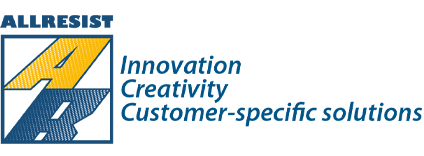Positive two- layer lift-off system
These systems have a bottom resist that is not photosensitive but soluble in alkali. The polymers must be composed in such a way that the lacquer coat withstands a coating with a photoresist with the solvent PMA (PGMEA) without any problems. Otherwise there would be a mixing of both resist layers.
